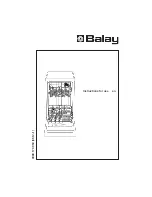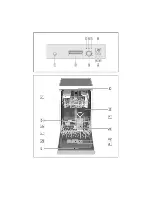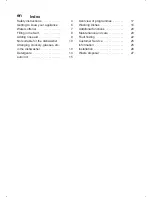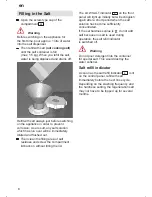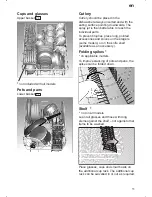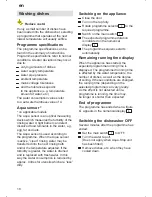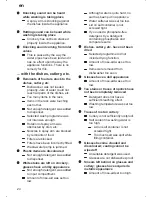
en
10
Not suitable for
the dishwasher
The following should not be
cleaned in the dishwasher:
Wooden cutlery and utensils – these
will leach out and become unsightly;
even the utilised stickers are not
suitable for the temperatures which
occur.
Sensitive ornamental glasses, craft
utensil and vases, special antique
or irretrievable utensils. These
ornaments are not dishwasher-proof.
Plastic parts sensitive to hot water.
Copper and tin utensils.
Utensils which are soiled with ash, wax,
lubricating grease or ink.
Absorbent materials such as sponges
and cloths.
Aluminium and silver parts have
a tendency to discolour and fade during
the wash cycle. Even some types of glass
(e.g. crystal glass objects) may turn cloudy
after many wash cycles.
Recommendation:
In future buy utensils which are identified
as dishwasher-proof.
Damage to glassware and other
dishes
Possible causes:
type of glass or manufacturing process
chemical composition of detergent
water temperature and duration of
dishwasher programme.
Suggested remedy:
Use glassware or porcelain dishes that
have been marked ’dishwasher–proof’
by the manufacturer.
Use a mild detergent that is described
as ’kind to dishes’. If necessary, seek
further information from detergent
manufacturers.
Select a programme with as low a
temperature and as short a duration as
possible.
To prevent damage, take glass and
cutlery out of the dishwasher as soon
as possible after the programme has
ended.
Arranging crockery,
glasses, etc. in the
dishwasher
Loading the dishwasher
Scrape off any large amounts of
left-over food. It is not necessary to
rinse the dishes under running water.
Place objects in the dishwasher in such
a way that
D
items such as cups, glasses,
pots/pans, etc. are stood upside
down,
D
curved items, or those with
recesses, should be at a slant so
that water can run off,
D
they are stacked securely and
cannot tip over,
D
they do not prevent the spray arms
from rotating while washing takes
place.
Very small items should not be washed in
the dishwasher as they could easily fall out
of the baskets.
Removing the dishes
To prevent water dripping from the top
basket onto the dishes in the lower basket,
we recommend that you empty the lower
basket first and then the top basket.
Summary of Contents for 3VN551BD
Page 1: ...en...
Page 2: ......
Page 29: ...en 29 en Subjekt to modification...
Page 30: ......
Page 31: ......

